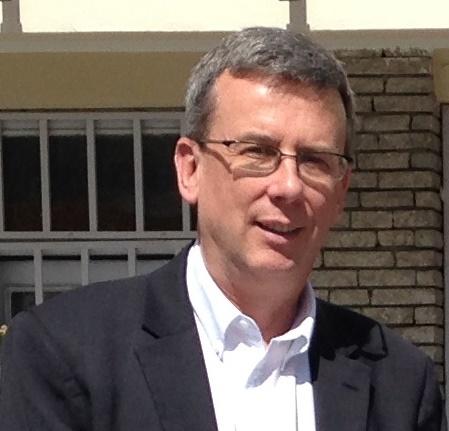
Submitted by Angela Walters on Thu, 12/07/2018 - 10:34
Mark Harvey, Head of Profession (Infrastructure) at the Department for International Development (DFID), reflects on how new technologies are driving positive change in developing countries.
As Head of Profession for Infrastructure at the DFID, I lead our cadre of 45 infrastructure advisers, support policy teams leading on infrastructure for economic development as well as other teams where infrastructure development plays an important role (e.g. basic services, reconstruction, stability). I work within our Research and Evidence Division. My role requires me to be familiar with the best quality evidence, its validity, innovation and thinking in the sector, both in the UK and globally. Securing this knowledge means working in an interdisciplinary way as well as linking with academics, consultancies and a range of organisations.
I worked outside the UK for 25 years and have been back in the UK for the past three, during which time I have taken an active interest in developments around UK infrastructure. My focus is to consider how sophisticated, cutting-edge innovations can make a meaningful impact in places of less developed capabilities. What are the possibilities and how do we build capacity to enable countries to get ahead?
I happened across a talk given by Professor Jim Hall at the University of Oxford; at a time when everyone else in infrastructure was concerned with finance and PPPs, Jim Hall was talking about economics and decision making around infrastructure through the interconnectivity and interdependencies between sectors. It was fascinating.
Since then I have become connected to the Global Challenges Research Fund (GCRF), the Infrastructure Transitions Research Centre (ITRC), and the cross-government Prosperity Fund. I have also met some of the team from the Centre for Digital Built Britain (CDBB) and been following the activity around BIM, both in the UK and overseas, with interest. While the value proposition of technology and digital to tackle some of our global challenges is clearly visible, I think the potential remains huge.
There are many examples of how new technologies are enabling change: night-time satellite imagery is being used to map regional economic activity offering a much quicker way to secure information previously requiring surveys; computer modelling is helping researchers predict patterns of flooding; sensor systems on hand pumps in Africa are monitoring the frequency of use to track the need for repairs or replacements and how an aquifer may be depleting; data-logging providing evidence enabling better monitoring and accountability of a project’s progress is reducing corruption and misuse – there are instances around the world when school constructions have been paid for three times using the same photograph as ‘evidence’. This type of monitoring is very valuable, especially in locations where a person cannot actually visit.
I was recently contacted by an architect complaining about the poor design of a new hospital. Using a methodology like BIM in collaboration before procurement and construction begins, will lead to fewer errors, cost savings and a better hospital to provide much-needed services.
Social media and smartphone technology are providing a link between infrastructure and people, showing how we behave in relation to our built environment. If we have monitoring systems producing data about infrastructure, and people with phones reporting traffic jams and travel disruptions in real time, the data is capturing how people behave in response to the infrastructure around them. It means infrastructure is not only a physical thing that never changes – it becomes more of a living dynamic service.
Data is being used in cities and developing countries to model systems and structures and society’s responses to it. I suspect there are not too many full evaluations of the changing landscape because technological developments are happening too quickly to see longer-term effects and changes. We will have to wait a little bit longer for that to be evident. I look forward to the outcome.
Contact: Mark Harvey
